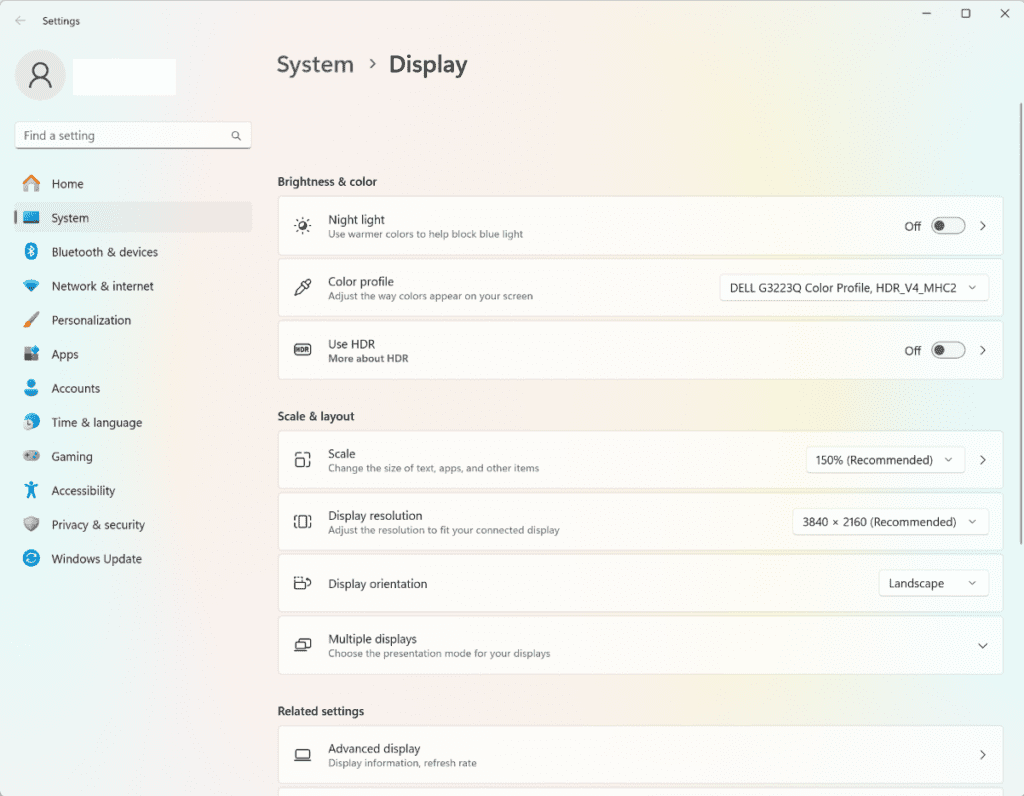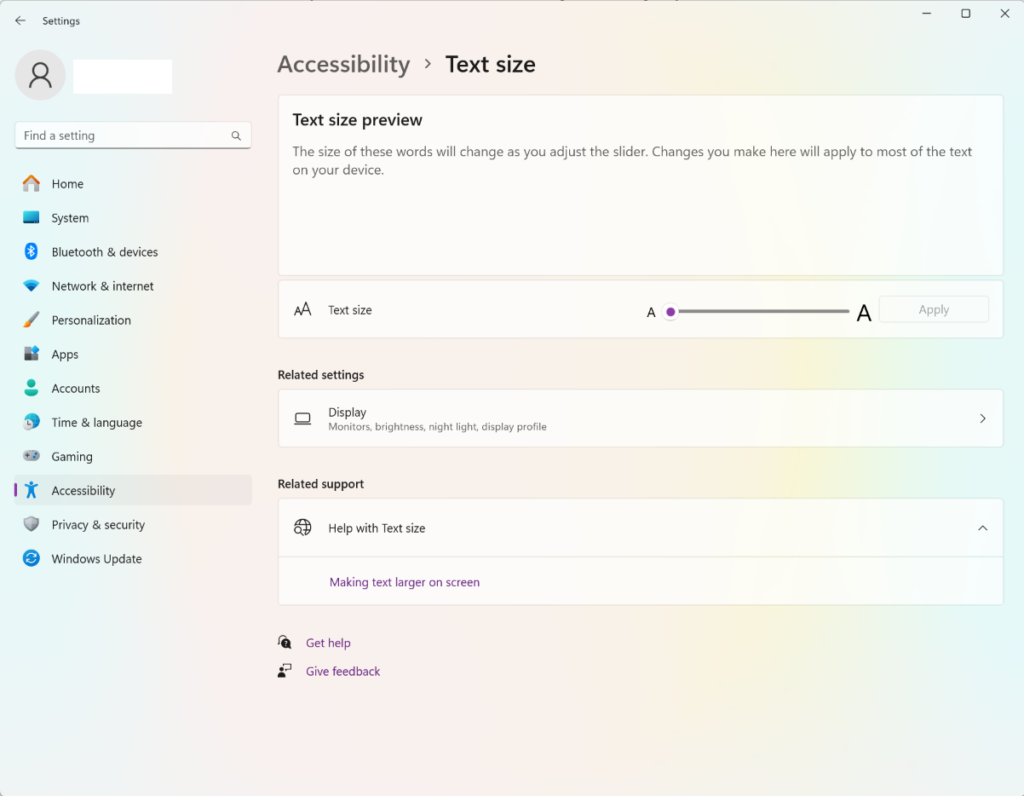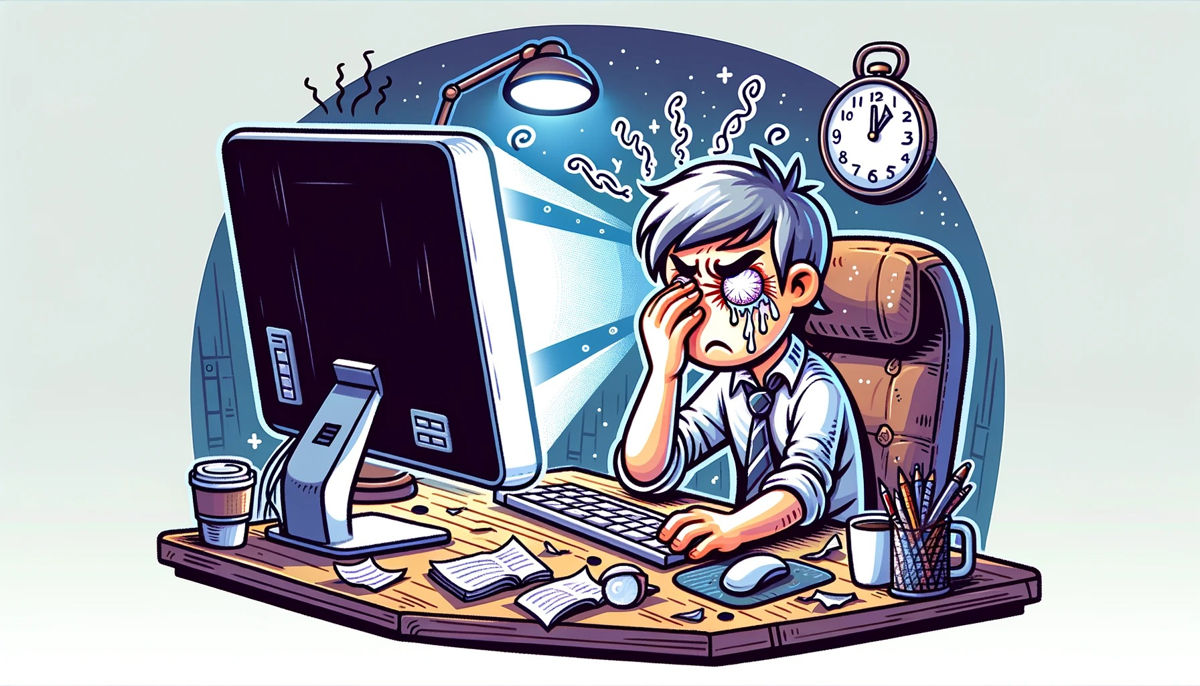If you spend hours staring at a screen, you’ve probably experienced eye strain—that uncomfortable dryness, burning, or blurry vision that makes it harder to focus. The good news? You can reduce eye strain with monitor settings by making simple adjustments to brightness, contrast, blue light exposure, text size, and positioning.
In this guide, we’ll cover the best monitor settings for reducing eye strain, ergonomic tips, and lighting adjustments to help you work or game comfortably without eye fatigue.
How to Reduce Eye Strain with Monitor Settings
Disclosure
Some of the links in this post are affiliate links, which means I may earn a small commission if you click and buy. As an Amazon Associate, I earn from qualifying purchases.
What Causes Eye Strain?
Before we fix it, let’s understand why eye strain happens:
- Excessive screen time without breaks
- Harsh brightness and contrast settings
- High blue light exposure leading to fatigue
- Small text sizes and poor display settings
- Bad monitor positioning causing neck and eye strain
- Glare and improper room lighting
Adjusting your monitor settings is the fastest way to reduce digital eye strain, prevent headaches, and improve visual comfort.
Steps You Can Take
1. Adjust Brightness & Contrast for Eye Comfort
One of the easiest ways to reduce eye strain with monitor settings is to optimize brightness and contrast.
Best Monitor Brightness for Reducing Eye Strain
- Match screen brightness to ambient room lighting
- If the screen glows too much, it’s too bright
- If text looks gray or dull, it’s too dim
- Ideal brightness: 120-140 cd/m²
Best Contrast Settings for Less Eye Strain
- Set contrast to 60-80% for optimal clarity
- Higher contrast = sharper text, less strain
🎯 Quick Fix: Lower brightness right now and test different contrast levels until text looks crisp and clear.
2. Reduce Blue Light Exposure & Adjust Color Temperature
Too much blue light from screens leads to eye strain and disrupts sleep. Here’s how to reduce eye strain with monitor settings for blue light reduction.
How to Enable a Blue Light Filter

- Windows: Settings → Display → Night Light
- Mac: System Settings → Displays → Night Shift
- Third-party apps: f.lux for custom color temperature control
Best Color Temperature to Reduce Eye Strain
- Reduce color temperature to 5000K–6500K for warmer tones
- Cooler (bluish) tones increase eye fatigue
- Warmer (yellowish) tones reduce strain
🎯 Quick Fix: Turn on Night Mode or install f.lux for automatic blue light reduction.
3. Increase Text Size & Adjust Display Settings for Readability
Small text forces your eyes to work harder. Optimizing text size is a quick way to reduce eye strain with monitor settings.
How to Adjust Text Size on Windows & Mac

- Windows: Settings → Accessibility → Vision→ Text size
- Mac: System Settings → Displays → Text Size
Other Display Settings for Eye Comfort
- Enable ClearType (Windows) for sharper text
- Try Dark Mode vs. Light Mode to see which feels better
- Use a high refresh rate (120Hz+ monitor) to reduce flickering
🎯 Quick Fix: Increase your text size right now to at least 125% for better readability.
4. Adjust Monitor Positioning to Reduce Eye Strain
Proper ergonomic setup reduces eye fatigue and prevents neck pain.
Best Monitor Position for Less Eye Strain
- Screen height: Top of monitor should be at or slightly below eye level
- Distance: Keep your monitor 50-70 cm (20-28 inches) away
- Tilt: Slightly backward (10-20 degrees) to minimize glare
🎯 Quick Fix: Adjust your monitor height and distance now to avoid looking down or straining your neck.
5. Use a Monitor Stand or Mount for Better Ergonomics
A monitor that’s too high or low strains your neck and eyes. Using an adjustable monitor stand or mount lets you position your screen correctly for comfort.
💡 Recommended Monitor Stands & Mounts

🔹 Ergotron LX Monitor Arm – Best for multi-adjustable positioning
🔹 VIVO Adjustable Monitor Stand – Budget-friendly and ergonomic
🔹 Amazon Basics Monitor Stand – Simple, sturdy, and effective
🎯 Quick Fix: If your screen is too low, stack books under it until it’s at eye level.
6. Follow the 20-20-20 Rule for Eye Relaxation
One of the simplest yet most effective ways to reduce eye strain with monitor settings is by following the 20-20-20 rule. This technique is recommended by eye care professionals to prevent digital eye fatigue caused by prolonged screen time.
What is the 20-20-20 Rule?
The 20-20-20 rule is a simple eye relaxation method:
🔹 Every 20 minutes, take a break
🔹 Look at something 20 feet away
🔹 For at least 20 seconds
This technique allows your eye muscles to relax, reducing the fatigue that builds up when staring at a screen for long hours. Even if you optimize your monitor settings, your eyes still need periodic breaks to stay refreshed.
Why the 20-20-20 Rule Works for Eye Strain Relief
When using a computer or mobile device for extended periods, your eyes:
- Blink less, leading to dryness and discomfort
- Work harder to focus on close-up digital text
- Absorb too much blue light, contributing to strain and fatigue
Even with the best monitor settings to reduce eye strain, failing to take breaks can still cause discomfort. The 20-20-20 rule forces your eyes to reset, reducing stress on your ocular muscles and lowering the risk of digital eye strain.
How to Implement the 20-20-20 Rule with Monitor Settings
To effectively reduce eye strain with monitor settings, combine the 20-20-20 rule with proper screen adjustments:
✅ Set a Reminder – Use an alarm or a productivity app like “Eye Care 20 20 20” (Windows), “Break Timer” (Chrome extension), or “Awareness” (Mac).
✅ Position Your Monitor Correctly – Your screen should be 50-70 cm away and at eye level to reduce unnecessary strain.
✅ Adjust Brightness & Contrast – Match brightness to room lighting and set contrast between 60-80%.
✅ Enable a Blue Light Filter – Use Night Mode, f.lux, or built-in settings to cut blue light exposure.
✅ Increase Text Size – Use at least 125% scaling for easier readability.
While adjusting your monitor settings can significantly reduce eye strain, it’s not enough on its own. Combining optimized screen settings with the 20-20-20 rule ensures that your eyes remain relaxed and healthy throughout the day.
By implementing both strategies, you can reduce eye strain with monitor settings and keep your vision sharp while working or gaming.
7. Ensure Proper Lighting for Eye Comfort
Bad lighting causes glare, reflections, and added eye strain. Here’s how to fix it:
Best Lighting Setup for Reduced Eye Strain
- Use a soft, diffused table lamp instead of harsh ceiling lights
- Place the lamp on the side of the monitor, not behind it
- Use a monitor light bar for even lighting
💡 Recommended Table Lamps & Monitor Light Bars

🔹 BenQ ScreenBar Monitor Light – Reduces glare, clips onto monitor
🔹 Xiaomi Mijia Monitor Light Bar – Budget-friendly, adjustable brightness
🔹 Philips Hue Smart Lamp – Smart adjustable color temperature
🎯 Quick Fix: If your lighting is too harsh, dim it or reposition it right now.
📌 Quick “Do This Now” Checklist
✅ Lower brightness to match room lighting
✅ Turn on Blue Light Filter / Night Mode
✅ Increase text size to at least 125%
✅ Adjust monitor height & position (eye level, 50-70 cm away)
✅ Follow the 20-20-20 rule (set a reminder!)
✅ Improve lighting (use a lamp or monitor light bar)
✅ Try an anti-glare screen protector or blue light glasses
Related Articles
📌 240Hz vs 144Hz Gaming Monitors: Should You Upgrade?
📌 How to Choose the Best Monitor for Work & Gaming (Ultimate Guide)
📌 Best 4K Monitor for Productivity 2025 – Top Picks for Work & Creativity
📌 Best Budget Gaming Monitors 2025 – Top Picks Under $300!
📌 IPS vs. VA vs. TN vs. OLED vs. QLED: Which Monitor Panel is Best in 2025?
